- Home
- Simon Winchester
The Surgeon of Crowthorne Page 14
The Surgeon of Crowthorne Read online
Page 14
On account of the ambiguity of the letter u and its variant v before 1600, it is uncertain whether ME. pouere, poure, pouer, meant pou- or pov-. The phonetic series paupere(m, paupre, paubre, pobre, povre, shows that povre preceded poure, which may have been reached in late OF., and is the form in various mod.F. dialects. But the 15th and early 16th c. literary Fr. form was povre, artificially spelt in 15th c. pauvre, after L. pauper, and ME. pōre (the source of mod.Eng. poor) seems to have been reduced from povre like o’er from over, lord from loverd. Cf. also POORTITH, PORAIL, POVERTY. But some Eng. dialects now have pour (paʊr), which prob. represents ME. pour (puːr).]
I. 1. a. Having few, or no, material possessions; wanting means to procure the comforts, or the necessaries, of life; needy, indigent, destitute; spec. (esp. in legal use) so destitute as to be dependent upon gifts or allowances for subsistence. In common use expressing various degrees, from absolute want to straitened circumstances or limited means relatively to station, as ‘a poor gentleman’, ‘a poor professional man, clergyman, scholar, clerk’, etc. The opposite of rich, or wealthy. poor people, the poor as a class: often with connotation of humble rank or station…
6. Such, or so circumstanced, as to excite one’s compassion or pity; unfortunate, hapless. Now chiefly colloq.
In many parts of England regularly said of the dead whom one knew; = late, deceased.
The first slips of snow-white unlined paper, six inches by four, and covered with Minor’s neat and distinctively American handwriting in greenish black ink, began to drift out from the Broad-moor post-room in the spring of 1885. By the late summer they were arriving at their destination in small brown-paper packets every month, and then larger packets every week. Before long the gentle shower of paper had turned into a raging blizzard, one that was to howl up from Crowthorne unceasingly for almost all of the next twenty years.
The paper slips were not, however, sent to Mill Hill. By the time Minor had begun to engage in the second stage of his work, contributing the quotations rather than amassing the lists, Murray and his team had all moved up to Oxford. The editor had been persuaded to give up his comfortable job as a schoolteacher, and, despite the poor pay and the interminable hours, he had taken the plunge into full-time lexicography.
This was in spite of a general mood of malaise and wretchedness. Murray’s experiences with the first years of work on the Big Dictionary were far from happy, and many were the times he had vowed to resign. The Delegates at the Press seemed parsimonious and interfering; the pace of work was proving insufferably slow; his health was suffering from the interminable hours, his monomaniacal devotion to an almost impossible task.
But then there was one sustaining fact: the first of the fascicles, the revenue-producing instalments into which Oxford insisted that the Dictionary be divided, had at last been published, on 29 January 1884.
Nearly five years had elapsed since Murray had been appointed editor. Twenty-seven years had passed since Richard Chenevix Trench had given his famous address in which he called for a new English dictionary. Now, in a muddy off-white cover and with its sheets half uncut, was the first part, 352 pages’ worth of all the known English words from a to ant, published by the Clarendon Press, Oxford, at a price of twelve shillings and sixpence.
Here, at last, was the first morsel of substance: part one of the New English Dictionary on Historical Principles, Founded Mainly on the Materials Collected by the Philological Society, edited by James A. H. Murray, LL.D., Sometime President of the Philological Society, with the Assistance of Many Scholars and Men of Science.
Murray could not help but be proud; the problems that seemed so insuperable, and which so pressed down on him, would tend to vanish whenever he held the flimsy paper-covered volume in his hand. And in a sudden sunburst of birthday-eve optimism the editor – he would be forty-seven in less than a week – declared that he now felt confident in predicting that the final part would be published in eleven years’ time.
It was in fact to take another forty-four.
But now, after all the years of waiting, the interested world could at least see the magnificent complexity of the undertaking, the detail, the filigree work, the sheer intricacies of exactitude that the editors were bent on compiling. Those in England could write and receive a copy for twelve and six; those in America received a fascicle printed in Oxford, but published by Macmillan in New York, for three dollars and twenty-five cents.
The first part’s first word – once the four pages devoted to the simple letter ‘A’ had been accounted for – was the obsolete noun aa, meaning a stream or watercourse. There was a quotation supporting its existence from a work of 1430, which had a reference to the still rather damp and water-girt Lincolnshire town of Saltfleetby, in which, four centuries before, there had been a rivulet known locally as ‘le Seventowne Aa’.
The first properly current word in the fascicle was aal, a Bengali or Hindi name for a plant related to the madder, from which a dye could be extracted and used to colour clothes. Andrew Ure’s 1839 Dictionary of Arts, Manufactures and Mines provided the authority: ‘He has obtained from the aal root a pale yellow substance which he calls morindin.’
And then the first properly English word – if, a linguist might quibble, there ever is such a thing. It was to be aard-vark, the half-armadillo, half-anteater that lives in sub-Saharan Africa and has a sticky two-foot tongue. Three quotations are offered, the earliest from 1833.
Thus does the vast emporium of words begin to display itself, through acatalectic and adhesion, via agnate and allumine, to animal, answer and, finally, to ant. By that last, Murray’s team meant a great deal more than simply ‘the small social insect of the Hymenopterous order’; there is also the contraction for ain’t, a rare prefix meaning anti- as with antacid and more commonly the suffix appended to make words like tenant, valiant, claimant and pleasant. Three hundred and fifty pages of scholarly amassment, the first pages of what would in more than four decades’ time swell to no fewer than 15,487.
It was in the new Scriptorium in Oxford that Murray was to do all future work on the Dictionary. He and Ada and their considerable family – they had nine children at this time – had moved there in the summer of 1884, six months after A–Ant. They had taken a large house on what were then the northern outskirts of the city, at 78 Banbury Road. It was called Sunny-side. The house, large and comfortable in the manner of north Oxford (a sedate settling-ground for the university’s greater dons and lesser institutes), exists still, together with the red pillar-box that the Post Office erected outside to swallow up the immense amounts of outgoing letters. Today the house is occupied by a popular anthropologist, and he has changed it little enough on the outside.
Only the Scriptorium – the Scrippy, as the Murray family knew it (and Murray’s own dictionary defines it as ‘the room in a religious house set apart for the copying of manuscripts’), has gone. Perhaps not surprisingly: no one, even in Victorian times, much liked the iron and corrugated-tin construction, fifteen feet by fifty, that was put up in the back garden. The next-door neighbour said it spoiled his view, and so Murray had it sunk into a three-foot trench, which made it damp and cold for the staff, and produced a huge bank of discarded earth that offended the neighbours even more. When finished, people said it looked like a tool-house, a stable or a wash-house, and those who laboured in it cursed the monkish asceticism of its construction and its irredeemably bone-chilling cold, and called it ‘a horrid, corrugated den’.
But it was twenty feet longer than the Mill Hill Scriptorium (which does still exist, an annexe to the library of what is still a costly and fashionable school), and the arrangements for filing, sorting and then using the incoming quotation slips – which by now were flooding in at the rate of more than a thousand each day – were much improved.
There were 1,029 pigeon-holes built at first (Coleridge had had just fifty-four); then banks of shelves were built as the volume and the sheer weight of slips became unmanageably large. Long
and well-polished mahogany tables supported the texts selected for the word of the day or the hour, and large churchly lecterns held up the main dictionaries and reference books to which Murray and his workers made constant reference. The leader himself had placed his seat and desk on a dais back in the Mill Hill days; here at Oxford there was a more democratically level floor, but Murray’s stool was taller than the rest, and he continued to preside from it with unchallenged authority, seeing all, missing little.
He organized the workings of the Scriptorium as might an officer on a battlefield. The slips were the peculiar province of the quartermaster, and Murray was a superb QMG. The packages of slips would come in each morning. One reader would check quickly to see if the quotation was full, and all words were spelled properly; then a second – often one of Murray’s children, each employed almost as soon as literate, paid sixpence a week for half an hour a day and rendered precociously crossword-capable – would sort the contents of each bundle into the catchwords’ alphabetical order. A third worker would then divide the catchwords into their various recognized parts of speech – bell as noun, bell as adjective, bell as verb for instance – and then a fourth employee would see that the quotations assembled for each were arranged chronologically.
Then one of Murray’s assistants would subdivide the meanings of each word into the various shades it had enjoyed over its lifetime; also at this point (and if he had not done so earlier) he would make a first stab at writing that most crucial feature of most dictionaries – the definition.
Defining words properly is a fine and peculiar craft. There are rules – a word (to take a noun as an example) must first be defined according to the class of things to which it belongs (mammal, quadruped), and then differentiated from other members of that class (bovine, female). There must be no words in the definition that are more complicated or less likely to be known than the word being defined. The definition must say what something is, and not what it is not. If there is a range of meanings of any one word – cow having a broad range of meanings, cower having essentially only one – then they must be stated. And all the words in the definition must be found elsewhere in the dictionary – a reader must never happen upon a word that he cannot discover elsewhere in the same book. Contrive to follow all these rules, and stir into the mix an ever pressing need for concision and elegance – and if the craftsman is true to his task a proper definition will probably result.
By now the words from the envelope of quotations would have been assembled into the smallest of subgroups, each with a stated meaning and a definition – either just written by a junior, or written some time before when the word was in a half-completed state. It remained now to divide these subgroups chronologically, so as to demonstrate – with the army of quotations – just how the shades of meaning of the catchword had altered and evolved over its life span.
Once this was done, Murray would take the collections of slips for each of the subgroups for any distinct and defined target word, and arrange or rearrange or further subdivide them as he saw fit. He would write and insert the word’s etymology (which Oxford, despite its own etymological dictionary, did in the end see fit to allow Murray to include) and its pronunciation – a tricky decision, and one likely to provoke, as it has, ceaseless controversy – and then make a final selection of the very best quotations. Ideally there would be at least one sentence from the literature for each century in which the word was used – unless it was a very fast-changing word, and needed more quotations to suggest the speed of its new shadings.
Finally, with that all squared away, Murray would write the concise, scholarly, accurate and lovingly elegant definition for which the Dictionary is well known – and send the finished columns over to the Press. It would be set in a Clarendon or an Old Style typeface (or in Greek or other foreign or ancient English or Anglo-Saxon face when needed), and returned to the Scriptorium, printed in galley proofs. It was ready to be set on to a page, and the page made into a form for placing on the great letterpress engines in the stone printing works down the back of Walton Street.
Murray’s letters tell a great deal about the difficulty of the task he had set himself – and that which the publishers, who wanted to see a return on their investment, in turn had set him. The expressed hope was that two parts – 600 pages of finished Dictionary – might be published each year. Murray himself tried gallantly to complete work on thirty-three words every day – and yet ‘often a single word, like Approve… takes ¾ of a day itself’.
Murray spoke of the trials of the work in his presidential address to the Philological Society, and in a subsequent Athenaeum article in March 1884 – an article that led to his first real contact with Minor. He referred to the difficulty ‘of pushing our way experimentally through an untrodden forest where no white man’s ax has been before us’.
Only those who have made the experiment know the bewilderment with which editor or sub-editor, after he has apportioned the quotations for such a word as above… among 20, 30 or 40 groups, and furnished each of these with a provisional definition, spreads them out on a table or on the floor where he can obtain a general survey of the whole, and spends hour after hour in shifting them about like pieces on a chess-board, striving to find in the fragmentary evidence of an incomplete historical record, such a sequence of meanings as may form a logical chain of development. Sometimes the quest seems hopeless; recently, for example, the word art utterly baffled me for several days: something had to be done with it; something was done and put in type; but the renewed consideration of it in print, with the greater facility of reading and comparison which this afforded, led to the entire pulling to pieces and reconstruction of the edifice, extending to several columns of type.
It was about this time, when Murray was so very vexed over art, that one of his assistants – or perhaps it was Murray himself – wrote the first official request to Broadmoor. They wanted Minor to find out if he had earmarked any quotations for art that suggested other meanings, or which came from earlier dates, than had been assembled so far. Sixteen distinct shades of meaning had been uncovered for the noun: perhaps Dr Minor had some more, or some further illumination of the word. If so, then he – and anyone else, for that matter – should kindly send them back to Oxford, post-haste.
Eighteen letters duly came in about the word from a variety of readers who had seen the Athenaeum article. One of the replies, and undeniably the most fruitful, came from Broadmoor.
In comparison to all the other readers, who had offered merely a sentence or two, the unsung Dr Minor had enclosed no fewer than twenty-seven. He struck the workers in Oxford as not only a meticulous man but also very prolific, and able to tap deep into wells of knowledge and research. The Dictionary team had made a rare find.
It has to be said that most of Minor’s quotations for this particular word came from a somewhat obvious source: Sir Joshua Reynolds’s famous Discourses, written in 1769, the year after he became President of the Royal Academy. But they were of inestimable value to the Dictionary-makers – and as proof, standing there today as mute memorial to the beginnings of his work, is the first known quotation that William Chester Minor had placed in the finished book.
It is the first-but-one quotation under the sense The Arts, and it reads simply:
1769 SIR J. REYNOLDS Disc. i. Wks. 1870 I. 306. There is a general desire among our Nobility to be distinguished as lovers and judges of the Arts.
Unwittingly, Sir Joshua’s words were to provide the starting-point for a relationship between Murray and Minor that would combine sublime scholarship, fierce tragedy, Victorian reserve, deep gratitude, a mutual respect and a slowly growing amity that could even be termed friendship, in the loosest sense. Whatever called, it was a link that would last the two men until death finally separated them thirty years later. The work that Minor did for the Dictionary, and that began with Reynolds’s Discourses, continued for the next two decades; but some stronger bond than a simple love of words had also been forged, and
it was one that kept these quite different elderly men connected intimately for half as long again.
It was to be seven years before they met, however. During that time Minor began to send out his quotations at a prodigious rate – at times many more than a hundred new slips every week, as many as twenty a day, all in his neat, firm hand. He would always write to Murray rather formally, straying only rarely into matters that were not within his self-appointed purview.
The first correspondence that survives, from October 1886, was largely about agricultural matters. Perhaps the doctor, taking a break from his work at the table, had stood up to stretch and had gazed wistfully from his cell window down at the farm labourers in the valley below, watching them stacking the late autumn sheaves and drinking warm cider under the oaks. He refers in his letter to a book he is reading called Maison Rustique, or the Countrey Farme (in an edition by Gervase Markham, published in 1616) and to occurrences of the verb bell – as when the ripening hops swell out in bell shapes in late August. Blight too catches his attention, as well as blast, and then heckling, which on farms once meant the process of separating the flax plant stem from stem, and only later became used in a political sense, to catechize someone, to make their arguments stand up to severe scrutiny, as a flax plant might stand when divided for the scutcher.
He liked the word buckwheat too – and finds such niceties as ointment of buckwheat and the French phrase blé noir. He clearly revels in his work: one can almost feel him squirming with teenage excitement as he offers ‘I could give you more if you wanted’, and as a teasing bonus throws in a small temptation on the thoroughly amusing word horsebread. He signs off, seeming to will a response from the great man on the great Outside: ‘I trust same may be useful to you – Very truly yours, W. C. Minor, Broadmoor, Crowthorne, Berks.’.

 The Surgeon of Crowthorne
The Surgeon of Crowthorne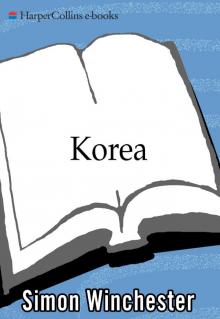 Korea: A Walk Through the Land of Miracles
Korea: A Walk Through the Land of Miracles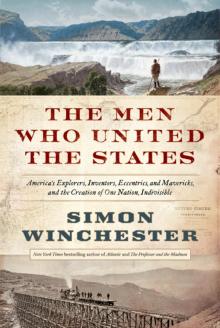 The Men Who United the States: America's Explorers
The Men Who United the States: America's Explorers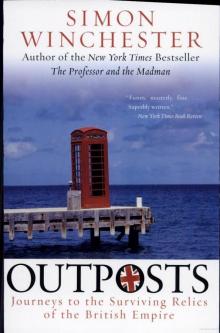 Outposts: Journeys to the Surviving Relics of the British Empire
Outposts: Journeys to the Surviving Relics of the British Empire Atlantic: Great Sea Battles, Heroic Discoveries, Titanic Storms
Atlantic: Great Sea Battles, Heroic Discoveries, Titanic Storms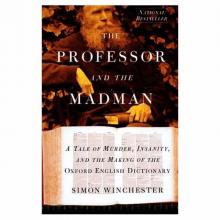 The Professor and the Madman: A Tale of Murder, Insanity
The Professor and the Madman: A Tale of Murder, Insanity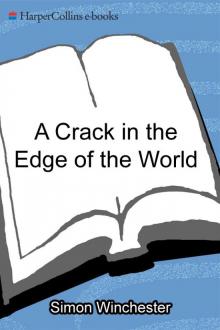 A Crack in the Edge of the World
A Crack in the Edge of the World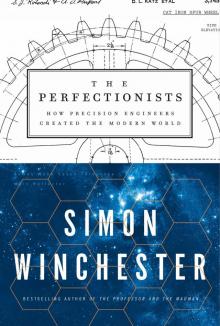 The Perfectionists: How Precision Engineers Created the Modern World
The Perfectionists: How Precision Engineers Created the Modern World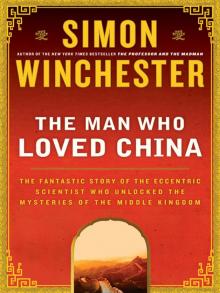 The Man Who Loved China: The Fantastic Story of the Eccentric Scientist
The Man Who Loved China: The Fantastic Story of the Eccentric Scientist The River at the Center of the World: A Journey Up the Yangtze
The River at the Center of the World: A Journey Up the Yangtze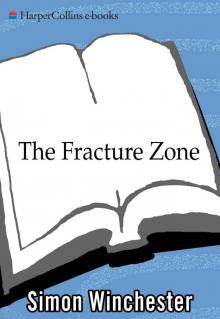 The Fracture Zone: My Return to the Balkans
The Fracture Zone: My Return to the Balkans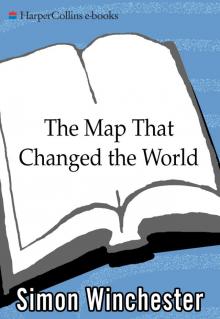 The Map That Changed the World
The Map That Changed the World Krakatoa: The Day the World Exploded
Krakatoa: The Day the World Exploded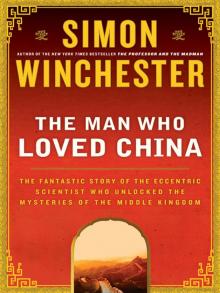 The Man Who Loved China
The Man Who Loved China The River at the Centre of the World
The River at the Centre of the World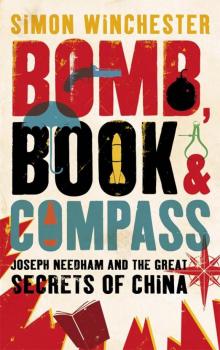 Bomb, Book and Compass
Bomb, Book and Compass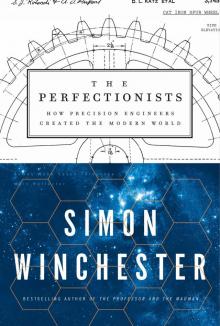 The Perfectionists
The Perfectionists The Meaning of Everything
The Meaning of Everything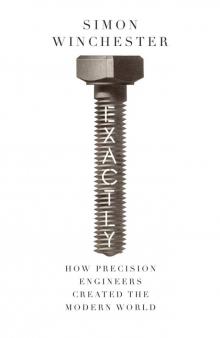 Exactly
Exactly Atlantic
Atlantic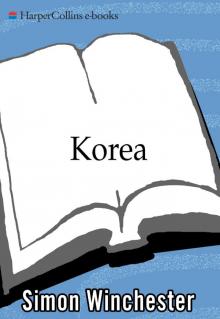 Korea
Korea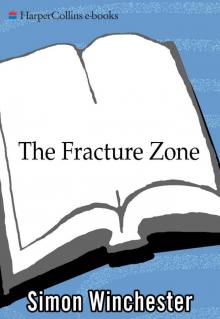 The Fracture Zone
The Fracture Zone Pacific
Pacific Krakatoa
Krakatoa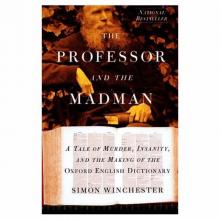 The Professor and the Madman
The Professor and the Madman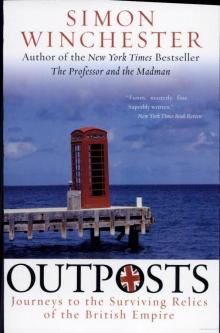 Outposts
Outposts